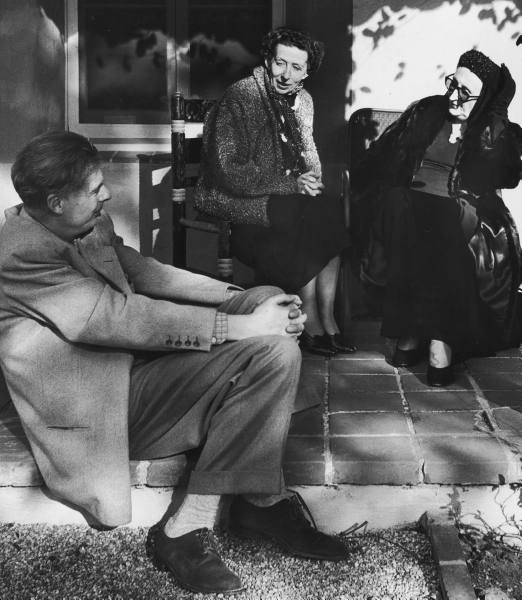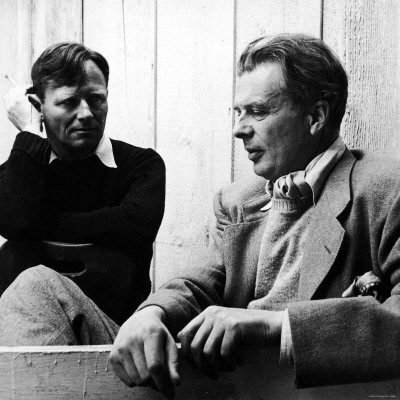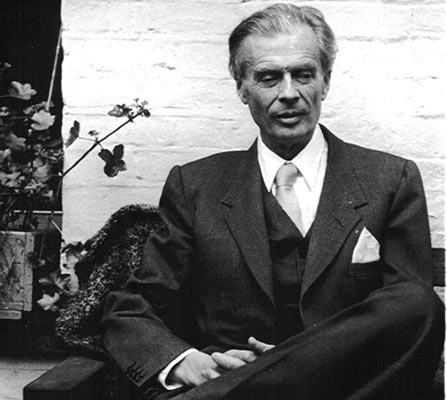<Back to Index>
- Sociologist Ferdinand Tönnies, 1855
- Writer Aldous Leonard Huxley, 1894
- 1st Prime Minister of Ukrainian People's Republic Volodymyr Kyrylovych Vynnychenko, 1880
PAGE SPONSOR
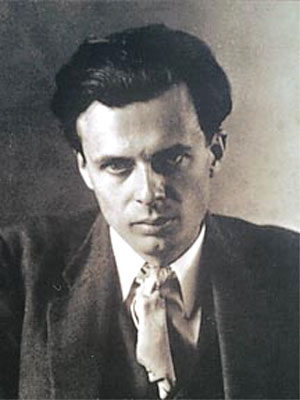
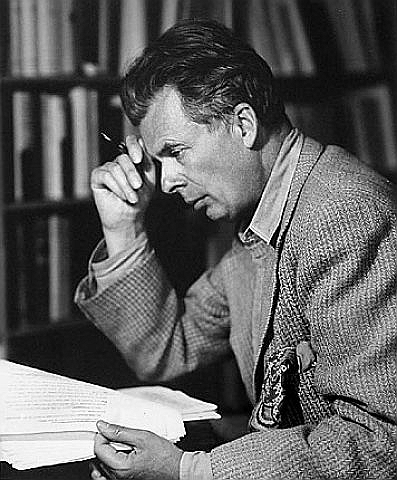
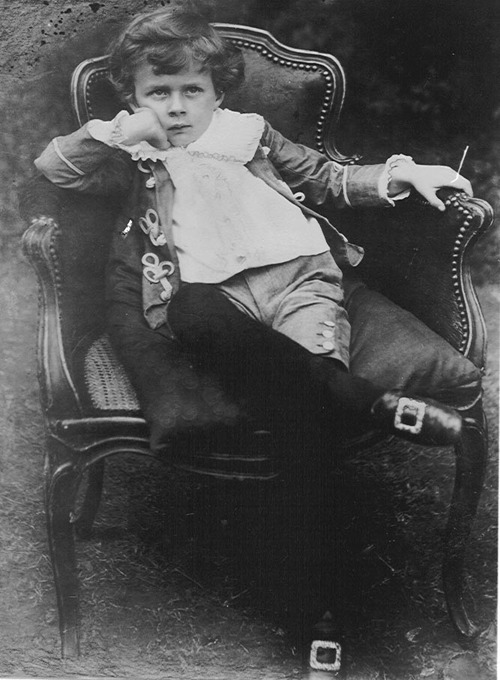
Aldous Leonard Huxley (26 July 1894 – 22 November 1963) was an English writer and one of the most prominent members of the famous Huxley family. He spent the later part of his life in the United States, living in Los Angeles from 1937 until his death in 1963. Best known for his novels including Brave New World and a wide ranging output of essays, Huxley also edited the magazine Oxford Poetry, and published short stories, poetry, travel writing, and film stories and scripts.
Aldous Huxley was a humanist and pacifist, and he was latterly interested in spiritual subjects such as parapsychology and philosophical mysticism. He is also well known for advocating and taking psychedelics. By
the end of his life Huxley was considered, in some academic circles, a
leader of modern thought and an intellectual of the highest rank, and
highly regarded as one of the most prominent explorers of visual
communication and sight - related theories as well. Aldous Huxley was born in Godalming, Surrey, UK in 1894. He was the third son of the writer and schoolmaster Leonard Huxley and his first wife, Julia Arnold who founded Prior's Field School. Julia was the niece of educator Matthew Arnold and the sister of Mrs. Humphrey Ward. Aldous was the grandson of Thomas Henry Huxley, the zoologist, agnostic and controversialist ("Darwin's Bulldog"). His brother Julian Huxley and half - brother Andrew Huxley also
became outstanding biologists. Huxley had another brother, Noel
Trevenen (1891 – 1914), who committed suicide after a period of clinical
depression. Huxley
began his learning in his father's well equipped botanical laboratory,
then continued in a school named Hillside. His teacher was his mother
who supervised him for several years until she became terminally ill.
After Hillside, he was educated at Eton College. Huxley's mother died in 1908, when he was 14. In 1911, he suffered an illness (keratitis punctata) which "left [him] practically blind for two to three years". Aldous's near - blindness disqualified him from service in the First World War. Once his eyesight recovered sufficiently, he was able to study English literature at Balliol College, Oxford. In 1916 he edited Oxford Poetry and later graduated with first class honours. His brother Julian wrote, I
believe his blindness was a blessing in disguise. For one thing, it put
paid to his idea of taking up medicine as a career... His uniqueness
lay in his universalism. He was able to take all knowledge for his
province. Following
his education at Balliol, Huxley was financially indebted to his father
and had to earn a living. He taught French for a year at Eton, where
Eric Blair (later known by the pen name George Orwell) and Stephen Runciman were
among his pupils, but was remembered as an incompetent and hopeless
teacher who couldn’t keep discipline. Nevertheless, Blair and others
were impressed by his use of words. For a short while in 1918, he was employed acquiring provisions at the Air Ministry. Significantly, Huxley also worked for a time in the 1920s at the technologically advanced Brunner and Mond chemical plant in Billingham, Teesside, and the most recent introduction to his famous science fiction novel Brave New World (1932) states that this experience of "an ordered universe in a world of planless incoherence" was one source for the novel.
Huxley
completed his first (unpublished) novel at the age of 17 and began
writing seriously in his early 20s. His first published novels were
social satires, beginning with Crome Yellow (1921). During the First World War, Huxley spent much of his time at Garsington Manor, home of Lady Ottoline Morrell, working as a farm labourer. Here he met several Bloomsbury figures including Bertrand Russell and Clive Bell. Later, in Crome Yellow (1921)
he caricatured the Garsington lifestyle. In 1919 he married Maria Nys a
Belgian woman he met at Garsington; they had one son. The family lived
in Italy part of the time in the 1920s, where Huxley would visit his
friend D.H. Lawrence. Following Lawrence's death in 1930, Huxley edited Lawrence's letters (1933). Works of this period included important novels on the dehumanizing aspects of scientific progress, most famously Brave New World, and on pacifist themes (for example, Eyeless in Gaza). In Brave New World Huxley
portrays a society operating on the principles of mass production and
Pavlovian conditioning. Huxley was strongly influenced by F. Matthias Alexander and included him as a character in Eyeless in Gaza. In 1937, Huxley moved to Hollywood, California, with his wife Maria, son Matthew, and friend Gerald Heard. He lived in the U.S., mainly in southern California, until his death, but also for a time in Taos, New Mexico, where he wrote Ends and Means (published in 1937). In this work he examines the fact that although most people
in modern civilization agree that they want a world of "liberty, peace,
justice, and brotherly love", they have not been able to agree on how
to achieve it. Heard introduced Huxley to Vedanta (Veda - Centric Hinduism), meditation, and vegetarianism through the principle of ahimsa. In 1938 Huxley befriended J. Krishnamurti, whose teachings he greatly admired. He also became a Vedantist in the circle of Hindu Swami Prabhavananda, and introduced Christopher Isherwood to this circle. Not long after, Huxley wrote his book on widely held spiritual values and ideas, The Perennial Philosophy,
which discussed the teachings of renowned mystics of the world.
Huxley's book affirmed a sensibility that insists there are realities
beyond the generally accepted "five senses" and that there is genuine
meaning for humans beyond both sensual satisfactions and
sentimentalities. Huxley became a close friend of Remsen Bird, president of Occidental College. He spent much time at the college, which is in the Eagle Rock neighborhood of Los Angeles. The college appears as "Tarzana College" in his satirical novel After Many a Summer (1939). The novel won Huxley that year's James Tait Black Memorial Prize for fiction. Huxley also incorporated Bird into the novel. During this period Huxley earned some Hollywood income as a writer. In March 1938, his friend Anita Loos, a novelist and screenwriter, put him in touch with Metro - Goldwyn - Mayer who hired Huxley for Madame Curie which was originally to star Greta Garbo and be directed by George Cukor. (The film was eventually filmed by MGM in 1943 with a different director and stars.) Huxley received screen credit for Pride and Prejudice (1940) and was paid for his work on a number of other films, including Jane Eyre (1944). However, his experience in Hollywood was not a success. When he wrote a synopsis of Alice in Wonderland, Walt Disney rejected it on the grounds that "he could only understand every third word". Huxley's
leisurely development of ideas, it seemed, was not suitable for the
movie moguls, who demanded fast, dynamic dialogue above all else. For
Dick Huemer, during the 1940s, Huxley went to the first of a five
meetings' session to elaborate the script of Alice in Wonderland but never came again. For author John Grant, although the movie's character, the Caterpillar
displays some characteristics familiar from Huxley's discussion of his
experiments with hallucinogens, Huxley's contribution to the movie is nonexistent. On 21 October 1949, Huxley wrote to George Orwell, author of Nineteen Eighty-Four, congratulating Orwell on "how fine and how profoundly important the book is". In his letter to Orwell, he predicted: Within
the next generation I believe that the world's leaders will discover
that infant conditioning and narco - hypnosis are more efficient, as
instruments of government, than clubs and prisons, and that the lust
for power can be just as completely satisfied by suggesting people into
loving their servitude as by flogging them and kicking them into
obedience. After
the Second World War, Huxley applied for United States citizenship. His
application was continuously deferred on the grounds that he would not
say he would take up arms to defend the U.S. He claimed a
philosophical, rather than a religious objection, and therefore was not
exempt under the McCarran Act. So, he withdrew his application. Nevertheless, he remained in the country, and in 1959 he turned down an offer of a Knight Bachelor by the Macmillan government. During the 1950s Huxley's interest in the field of psychical research grew keener, and his later works are strongly influenced by both mysticism and his experiences with psychedelic drugs. In October 1930, the English occultist Aleister Crowley dined with Huxley in Berlin, and to this day rumours persist that Crowley introduced Huxley to peyote on that occasion. He was introduced to mescaline (considered to be the key active ingredient of peyote) by the psychiatrist Humphry Osmond in 1953. Through Dr. Osmond, Huxley met millionaire Alfred Matthew Hubbard who would deal with LSD on a wholesale basis. On 24 December 1955, Huxley took his first dose of LSD.
Indeed, Huxley was a pioneer of self - directed psychedelic drug use "in
a search for enlightenment", famously taking 100 micrograms of LSD as
he lay dying. His psychedelic drug experiences are described in the
essays The Doors of Perception (the title deriving from some lines in the book The Marriage of Heaven and Hell by William Blake), and Heaven and Hell. Some of his writings on psychedelics became frequent reading among early hippies. While living in Los Angeles, Huxley was a friend of Ray Bradbury.
According to Sam Weller's biography of Bradbury, the latter was
dissatisfied with Huxley, especially after Huxley encouraged Bradbury
to take psychedelic drugs. Beginning in 1939 and continuing until his death in 1963, Huxley had an extensive association with the Vedanta Society of Southern California, founded and headed by Swami Prabhavananda. Together with Gerald Heard, Christopher Isherwood,
and other followers he was initiated by the Swami and was taught
meditation and spiritual practices. In 1944 Huxley wrote the
introduction to the "Bhagavad Gita: The Song of God", translated
by Swami Prabhavanada and Christopher Isherwood, which was published by
The Vedanta Society of Southern California. From 1941 through 1960
Huxley contributed 48 articles to Vedanta and the West,
published by the Society. He also served on the editorial board with
Isherwood, Heard, and playwright John van Druten from 1951 through 1962. Huxley
also occasionally lectured at the Hollywood and Santa Barbara Vedanta
temples. Two of those lectures have been released on CD: Knowledge and Understanding and Who Are We from 1955. After the publication of The Doors of Perception,
Huxley and the Swami disagreed about the meaning and importance of the
LSD drug experience, which may have caused the relationship to cool,
but Huxley continued to write articles for the Society's journal, lecture at the temple, and attend social functions. With
respect to details about the true quality of Huxley's eyesight at
specific points in his life, there are differing accounts. Around 1939,
Huxley encountered the Bates Method for better eyesight, and a teacher, Margaret Corbett, who was able to teach him in the method. In 1940, Huxley relocated from Hollywood to a 40-acre (160,000 m2) ranchito in the high desert hamlet of Llano,
California, in northernmost Los Angeles County. Huxley then said that
his sight improved dramatically with the Bates Method and the extreme
and pure natural lighting of the southwestern American desert. He
reported that for the first time in over 25 years, he was able to read
without glasses and without strain. He even tried driving a car along
the dirt road beside the ranch. He wrote a book about his successes
with the Bates Method, The Art of Seeing which
was published in 1942 (US), 1943 (UK). It was from this period, with
the publication of the generally disputed theories contained in the
latter book, that a growing degree of popular controversy arose over
the subject of Huxley’s eyesight. It
was, and to a noticeable extent, still is widely held that, for most of
his life, since the illness in his teens which left Huxley nearly
blind, that his eyesight was exceedingly poor (despite the partial
recovery which had enabled him to study at Oxford). For instance, some
ten years after publication of The Art of Seeing, in 1952, Bennett Cerf was
present when Huxley spoke at a Hollywood banquet, wearing no glasses
and apparently reading his paper from the lectern without difficulty:
"Then suddenly he faltered — and the disturbing truth became obvious. He
wasn't reading his address at all. He had learned it by heart. To
refresh his memory he brought the paper closer and closer to his eyes.
When it was only an inch or so away he still couldn't read it, and had
to fish for a magnifying glass in his pocket to make the typing visible
to him. It was an agonizing moment." On the other hand, Huxley's second wife, Laura Archera Huxley, would later emphasize in her biographical account, This Timeless Moment:
"One of the great achievements of his life: that of having regained his
sight." Here, she portrays the accomplishment as both metaphorical and
considerably physiological in nature, attributing that which she cites J. Krishnamurti as naming the spirit of "freedom from the known", which she suggests that Huxley applied, non-exhaustively, in writing The Art of Seeing and utilizing the Bates Method. After revealing a letter she wrote to the Los Angeles Times disclaiming the label of Huxley as a "poor fellow who can hardly see" by Walter C. Alvarez,
she tempers this: "Although I feel it was an injustice to treat Aldous
as though he were blind, it is true there were many indications of his
impaired vision. For instance, although Aldous did not wear glasses, he
would quite often use a magnifying lens." Laura
Huxley proceeds to elaborate a few nuances of inconsistency peculiar to
Huxley's vision. Her account, in this respect, is discernibly congruent
with the following sample of Huxley's own words from The Art of Seeing.
"The most characteristic fact about the functioning of the total
organism, or any part of the organism, is that it is not constant, but
highly variable." Nevertheless, the topic of Huxley’s eyesight
continues to endure similar, significant controversy, regardless of how
trivial a subject matter it might initially appear. He married Maria Nys (10 September 1899 – 12 February 1955), a Belgian woman he met at Garsington, in 1919. They had one child, Matthew Huxley (19 April 1920 – 10 February 2005), who had a career as an epidemiologist. In 1955, Maria died of breast cancer. In 1956 he married Laura Archera (1911 – 2007), also an author. She wrote This Timeless Moment,
a biography of Huxley. In 1960 Huxley himself was diagnosed with
laryngeal cancer, and in the years that followed, with his health
deteriorating, he wrote the Utopian novel Island, and gave lectures on "Human Potentialities" at the Esalen institute, which were fundamental to the forming of the Human Potential Movement. On
his deathbed, unable to speak, Huxley made a written request to his
wife for "LSD, 100 µg, intramuscular". According to her account
of his death, in This Timeless Moment,
she obliged with an injection at 11:45 am and another a couple of hours
later. He died, aged 69, at 5:21 pm on 22 November 1963 - approximately
one hour and ten minutes before the assassination of John F. Kennedy.
Huxley's ashes were interred in the family grave at the Watts Cemetery,
home of the Watts Mortuary Chapel in Compton, a village near Guildford, Surrey, England. Media coverage of his death was overshadowed by the assassination of President John F. Kennedy, on the same day, as was the death of the Irish author C.S. Lewis who also died on 22 November. This coincidence was the inspiration for Peter Kreeft's book Between Heaven and Hell: A Dialog Somewhere Beyond Death with John F. Kennedy, C.S. Lewis, & Aldous Huxley. Huxley was survived by his only child, Matthew Huxley, an author, as well as an educator, anthropologist, and prominent epidemiologist. Aldous Huxley is also survived by two grandchildren.
